Designs for Aquaponic Systems: Pros and Cons
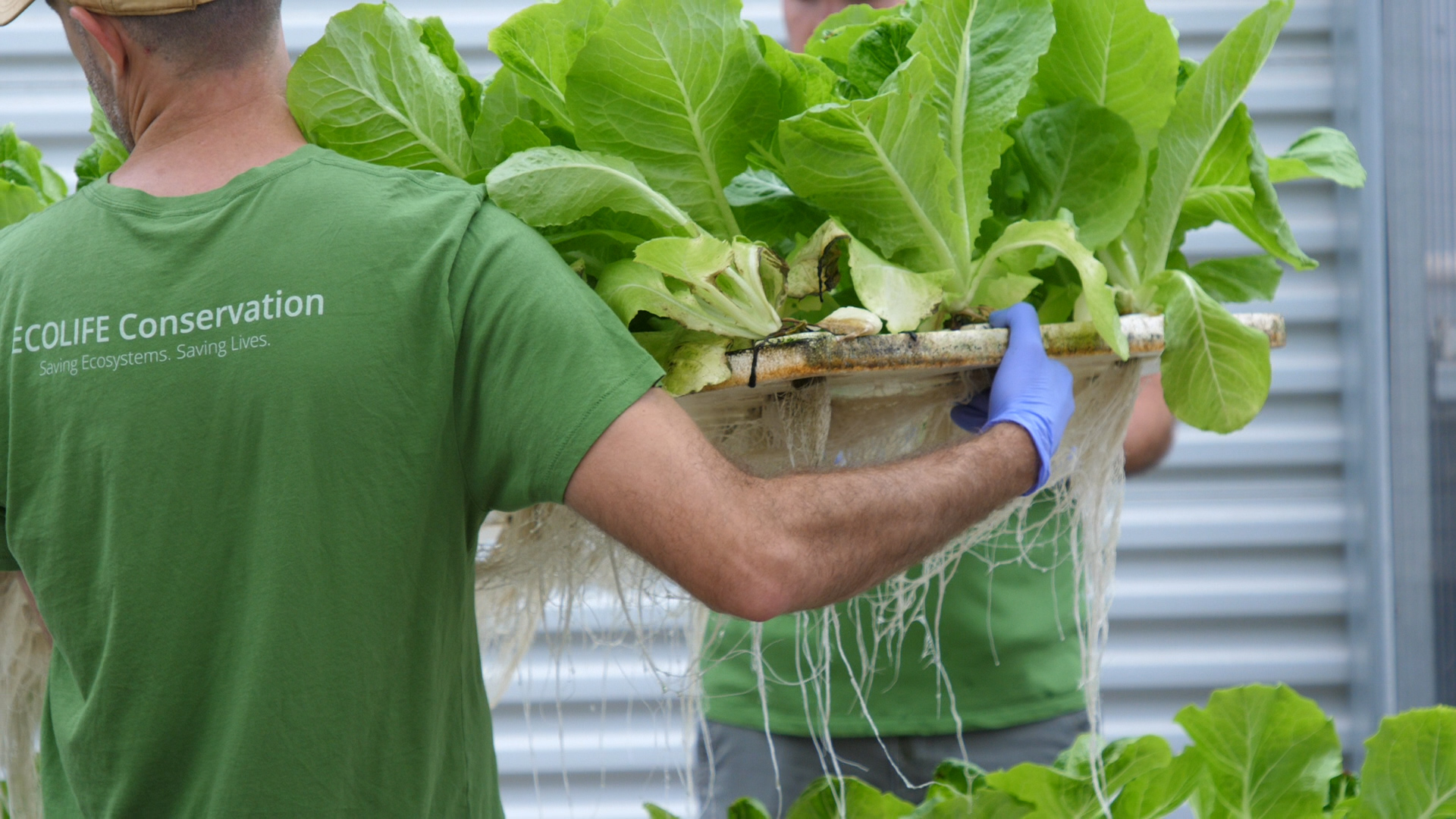
Primarily, there are three different typical designs for aquaponic systems; Nutrient Film Technique (NFT), Media Bed, and Deep Water Culture (DWC). Although these are not the only three designs, they are the most common and what we utilize here at ECOLIFE. When deciding what type of system to build, it is important to weigh the pros and cons of each design in order to determine what fits best with your needs and capacity.
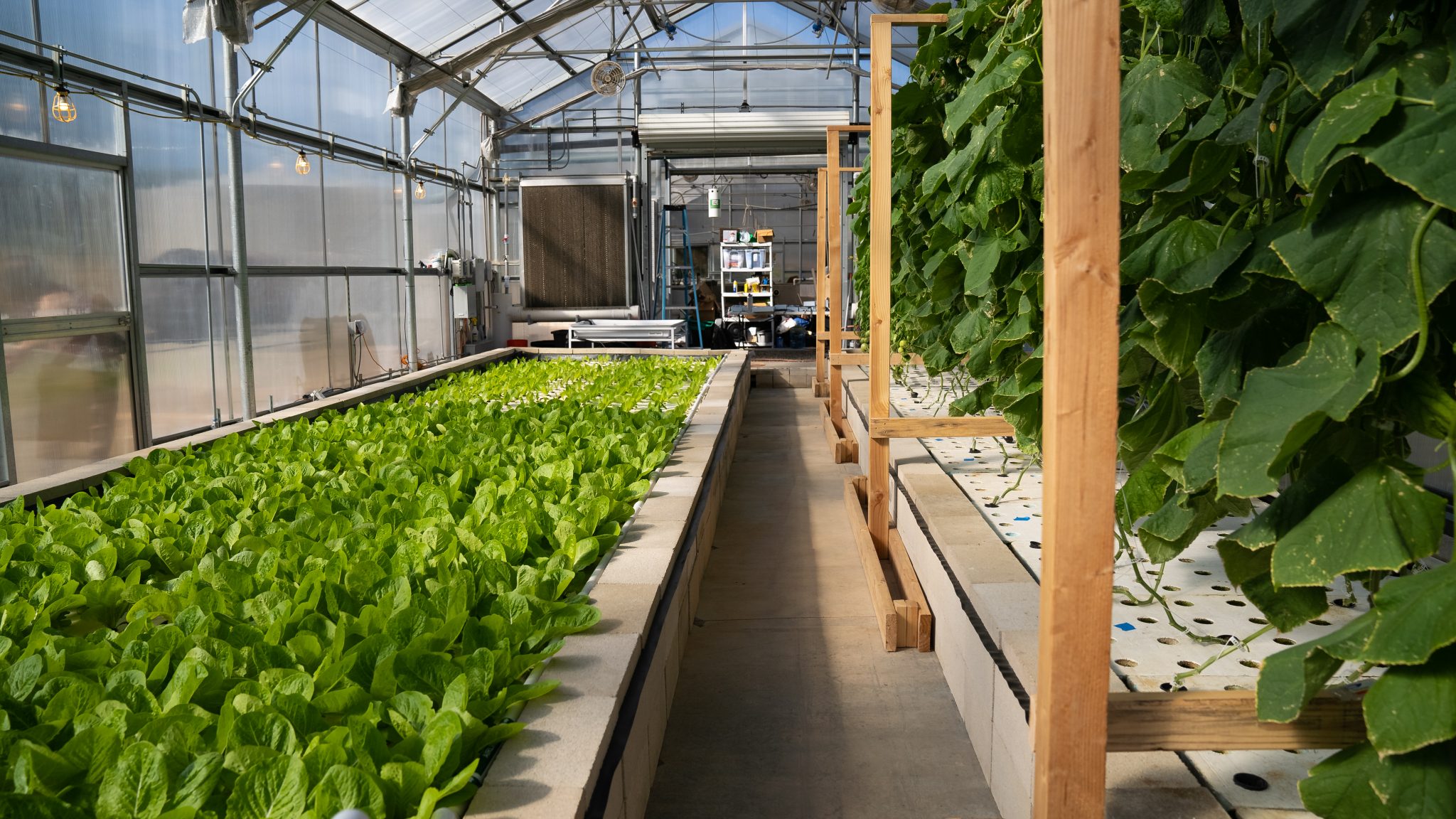
Questions to ask before you start your design:
It is important to think about the intended use of the system. Whether it’s for personal, educational, or commercial use, your intentions will ultimately determine what kind of aquaponic system is needed. You must also think about:
- Space/Scale: How much space do you have? Do you need to maximize it? How much do you intend to produce, for whom, and for what purpose?
- Type of crop: You have to match the system to the crops. Temperature ranges, nutrient demands, growth rate, weight, and root zones are all important factors in design selection.
- Environment: Annual, seasonal, and daily temperature fluctuations will directly affect the productivity of the different life forms and ultimately the design of your system. Will you want to absorb or exchange heat? Is it inside or outside?
- Technical capabilities: Each design has characteristics that lend themselves to different levels of expertise. Who will use and manage it, and how much do you need to know about food production and aquaculture techniques?
Nutrient Film Technique
Best Use:
NFT aquaponic systems are popular in the commercial industry because of their space efficiency and lower labor costs. Because crops can also be grown on a vertical plane (or shelf), they are easily accessible and harvestable. Most popular with hydroponic production, this method is best suited for leafy greens. This design is not suited for large fruiting plants as their root masses may clog the channel and their weight may not be supported. The plant roots are exposed to more air and less water in an NFT system which can leave the plants vulnerable to extreme heat or cold fluctuations.
Pros
- Continuous supply of water, oxygen, and nutrients
- Space efficient
- Easy to access
- Lower labor inputs
Cons
- Susceptible to clogging
- Higher possibility of water temperature fluctuation
- Not suitable for larger or flowering plants
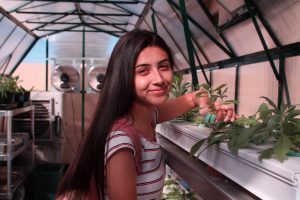
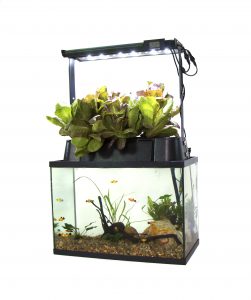
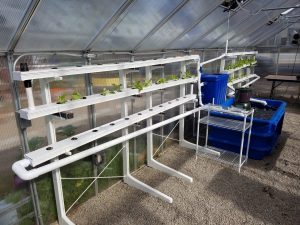
Media Beds
The media bed form of aquaponics uses containers filled with rock media such as gravel or expanded clay (hydroton) to support the roots of plants. The bed is flooded and drained of nutrient-rich water to give the plants the nutrients and oxygen they need. The media used to support the plants acts as both a mechanical and biofilter to capture and break down wastes.
Best Use
This technique is best used for backyard gardeners and beginners because it does not require an engineering, aquaponics, or plant science background to function well. It is inexpensive, simple to put together, and productive at a small scale. Because the media supports the plants like soil would, you are able to produce large root mass plants such as fruits, flowering plants, vegetables, and root vegetables. Because the media is not space efficient and requires considerably more inputs of labor, media bed designs are hard to scale into commercial use.
Pros
- Grows larger crops well
- Good biofiltration
- Simple and inexpensive to implement
- Media acts as filtration
- Great for smaller scale system
Cons
- Tough to scale for large production
- Requires more cleaning
- Higher maintenance and labor
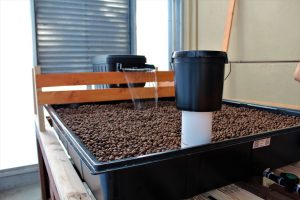
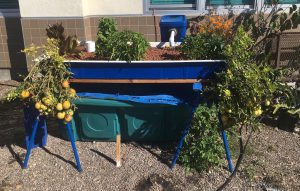
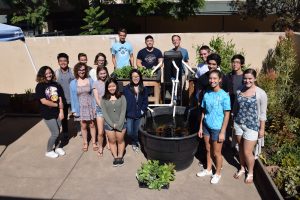
Deep Water Culture (DWC)
Also known as raft or float aquaponic systems, this method uses floating rafts to suspend plant roots into nutrient-rich and aerated water. The plant roots float directly into a pool of water about 1 foot in depth. Since there is no media to capture and process the solid wastes, filtration techniques must be built into the design. This necessitates more advanced aquaculture techniques and system requirements, leading to higher upfront costs.
Best Use
This design is common with commercial production as it is the most stable of the three aquaponic system types. Because there is much more water in the system, drastic nutrient and temperature fluctuations are much less likely to occur. It is best suited for warmer climates because although it would resist daily temperature swings, heating the water in colder climates is costly. In addition, larger root zone plants can be used, and removing plants is much easier than in media beds.
Pros:
- Commercial scalability
- Productive
- Good for warmer tropical climates
- Inexpensive
- Not as susceptible to large temperature and nutrient fluctuations
Cons:
- Filtration demands
- Labor demand and cost
- Space efficiency
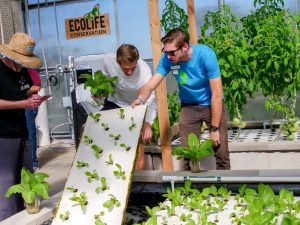
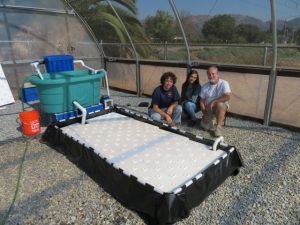
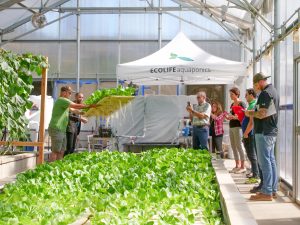
PUTTING AQUAPONICS INTO ACTION WITH OUR SUSTAINABLE AGRICULTURE PROGRAM
ECOLIFE uses aquaponic systems, a form of sustainable agriculture that uses 90% less water, a fraction of the space, and does not require the chemical and energy inputs of traditional agriculture. Aquaponics allows us to grow anywhere, including urban food deserts, classrooms, and community meeting centers. We are helping to end food insecurity in San Diego by improving access to healthy sustainable produce year-round to those who need it most. In and out of the classroom, ECOLIFE’s educational programming inspires young students, trains professionals, and teaches the community about the social and environmental benefits of aquaponics.
Our Modular Aquaponics Response Kit (M.A.R.K.™) has been designed to establish localized sustainable food systems and provide economic opportunities to underserved communities across the world. As part of this mission, we’re working with the Viejas Band of Kumeyaay Indians to increase accessibility to sustainable food options for the Viejas Tribal Community. By implementing innovative and sustainable farming methods with ECOLIFE’s aquaponic systems, the program will promote efficient resource utilization, reduce food and material waste, and help establish food autonomy and climate change adaptation strategies.
In addition to this, a key initiative of this program is to establish an edible educational garden workspace, which will serve as a hub for engaging Viejas youth and other tribal members in hands-on learning experiences. You can learn more about the Community Food Grant Program here.
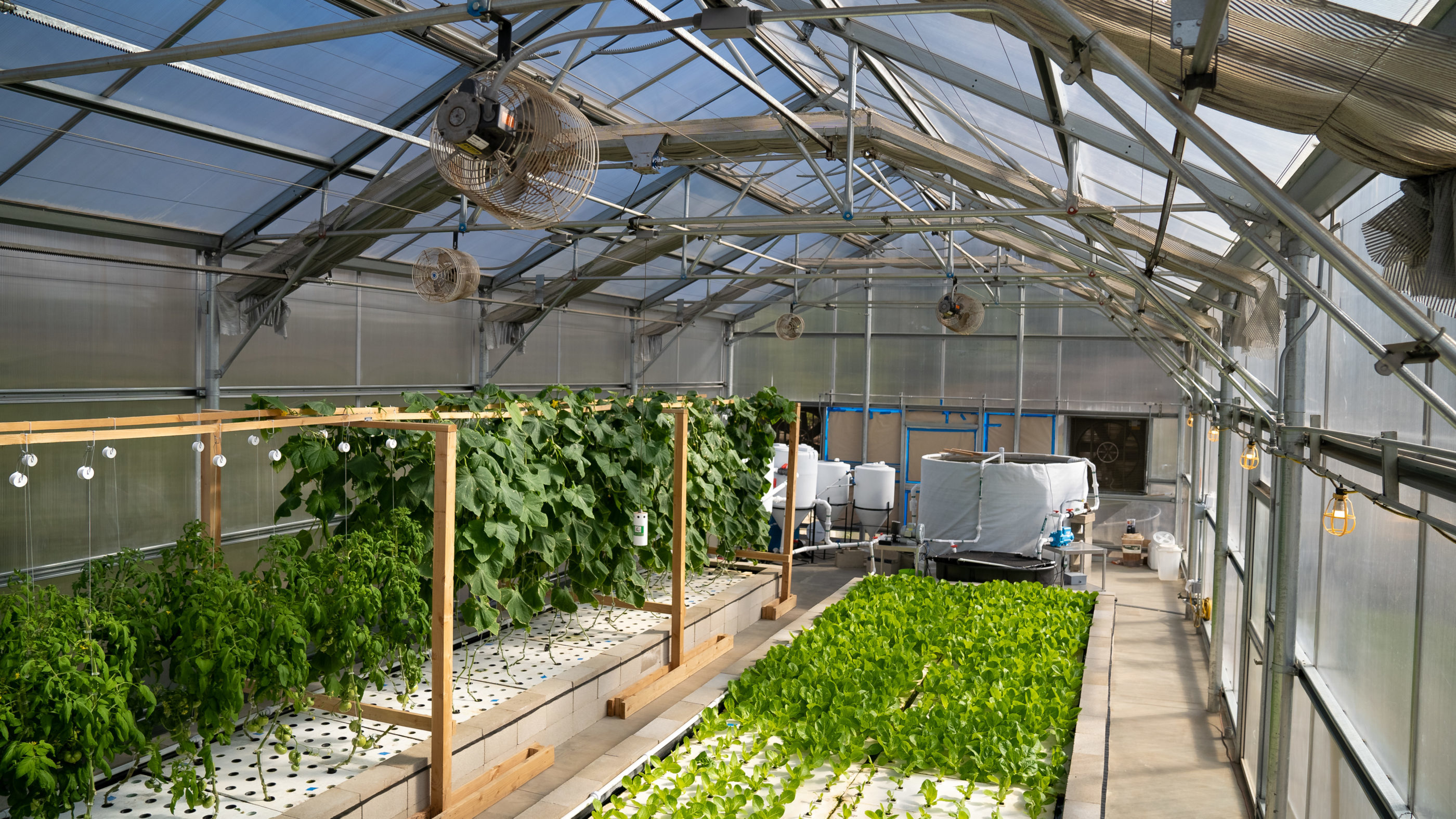
BE PART OF ECOLIFE’S WORK FOR A MORE SUSTAINABLE FUTURE
At ECOLIFE Conservation, our mission is to protect our environment’s precious resources and vulnerable species like the monarch butterfly. Our Sustainable Agriculture Program is one of the most important ways to do this.
As we celebrate our twentieth year of helping humans and nature prosper together, we’re looking forward to creating a sustainable future for generations to come. But we can’t create this future without your help. Our Sustainable Agriculture Program is going strong and we need continued support from members of our community like you in the form of donations. When you donate to ECOLIFE Conservation, 100% of your donation will go to protecting wildlife, natural resources, and the people who depend on them.